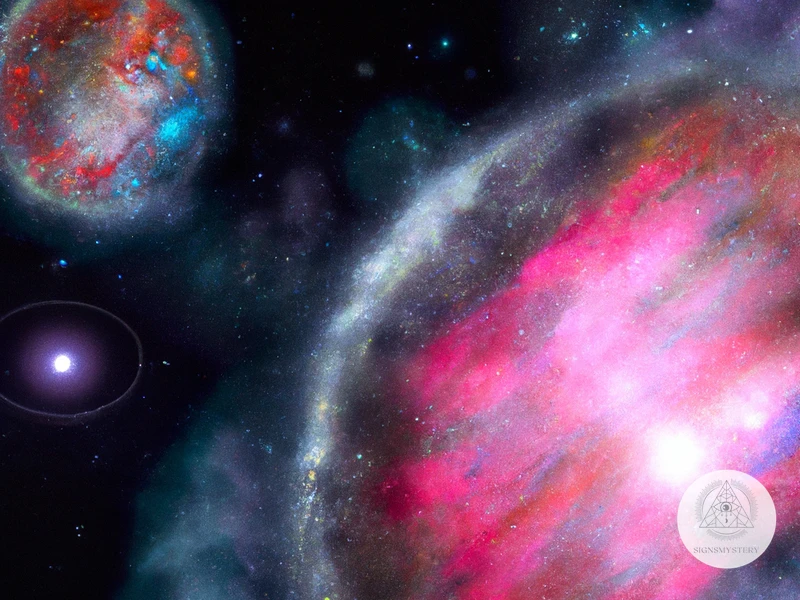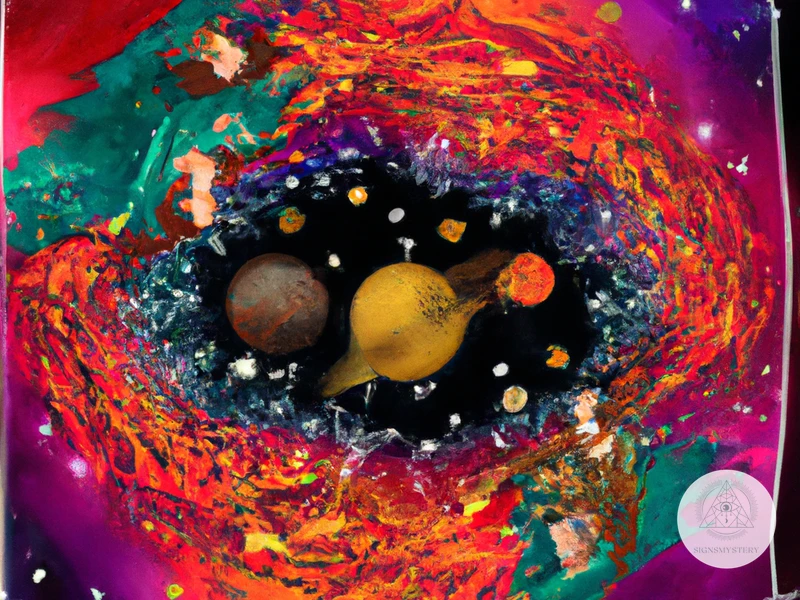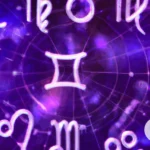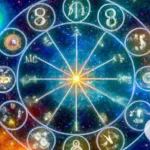Astrology has been used for centuries as a tool for understanding ourselves and our relationships. One key aspect of astrology that plays a crucial role in relationships is the examination of astrological aspects. These aspects reflect the dynamic connections between celestial bodies, offering insights into how different energies interact. By analyzing the impact of aspects on relationships, we can gain a deeper understanding of compatibility, power dynamics, and communication challenges. In this article, we will explore the significance of aspects in astrology, delve into their influence on relationships, interpret aspects in synastry, and discuss important dos and don’ts for understanding aspect influences. So, let’s embark on a journey through the fascinating world of astrological aspects and their impact on our connections with others.
Understanding Astrological Aspects

Understanding astrological aspects is essential in unraveling the intricate web of celestial connections and their impact on our lives. Astrological aspects represent the angles between different planets and points in a birth chart, creating a unique energy pattern that influences our personality traits, tendencies, and experiences. These aspects can be visualized using an aspect table, which provides a visual representation of the relationships between various celestial bodies. The most common types of aspects include conjunctions, sextiles, squares, trines, and oppositions, each carrying its own distinct energy and significance. By studying these aspects, astrologers can gain insights into how different planetary energies interact, providing a deeper understanding of an individual’s strengths, challenges, and potential. Astrological aspects serve as a foundation for further exploring compatibility, power dynamics, and communication challenges within relationships, a topic we will delve into in the following sections. So, let’s dive into the fascinating world of astrological aspects and unlock the secrets they hold.
1.1 What are Astrological Aspects?
Astrological aspects refer to the angular relationship between celestial bodies in a birth chart. These aspects determine how different planets and points in the chart interact and influence one another. Understanding the significance of astrological aspects is crucial in gaining insights into an individual’s personality, behaviors, and life experiences. These aspects can be visualized and analyzed using an aspect table, which displays the angles between planets and points. The most common types of aspects include conjunctions, sextiles, squares, trines, and oppositions, each bringing its own unique energy and influence. Conjunctions occur when planets are in close proximity to one another, blending their energies and intensifying their effects. Sextiles represent harmonious connections, promoting opportunities for growth and cooperation. Squares signify tensions and challenges, requiring effort and compromise to overcome. Trines bring ease and flow, enhancing the positive qualities of the connected planets. Oppositions create a dynamic of polarity and balance, representing a push-pull effect between conflicting energies. Studying these aspects allows astrologers to interpret and understand the complex interplay of energies in a birth chart, shedding light on an individual’s strengths, weaknesses, and potential life paths. By analyzing astrological aspects, we can gain a deeper understanding of ourselves and our relationships, paving the way for personal growth, self-awareness, and fulfillment.
1.2 Common Types of Astrological Aspects
Astrological aspects are categorized into several common types, each representing a unique interaction between celestial bodies. One type of aspect is the conjunction, which occurs when planets are in close proximity to each other, creating a blending of their energies. Conjunctions can intensify the traits associated with the involved planets, amplifying their influence in a birth chart. Another type is the sextile, which forms when planets are approximately 60 degrees apart. Sextiles bring opportunities for harmonious cooperation and creative expression. They often signify areas of natural talent and ease in an individual’s life. On the other hand, squares symbolize tension and challenges. They occur when planets are about 90 degrees apart, creating a sense of conflict that urges growth and transformation. Trines, at around 120 degrees apart, signify ease, support, and flow between planets, representing areas of natural skill and abundance in a person’s life. Lastly, oppositions occur when planets are approximately 180 degrees apart, creating a dynamic of polarity and tension. They showcase the need for balance and integration between opposing energies. Understanding these common types of astrological aspects allows astrologers to interpret and analyze the intricate dynamics within a birth chart accurately. By examining the specific aspects present, astrologers can gain insights into an individual’s strengths, challenges, and potential trajectories. The significance of these aspects becomes even more apparent when studying their impact on relationships during synastry, a topic we will explore in the subsequent sections of this article. So, let’s delve deeper into the fascinating world of astrological aspects and their role in shaping our connections with others.
Exploring the Impact on Relationships
Astrological aspects have a profound impact on relationships, shedding light on the complex dynamics between individuals. One of the key areas where these aspects come into play is compatibility. By examining the aspect patterns between two individuals’ birth charts, astrologers can gain insights into the strengths and challenges of their connection. Certain aspects, such as trines and sextiles, often indicate harmonious and supportive energy, fostering compatibility and ease in the relationship. On the other hand, challenging aspects like squares and oppositions can bring about power struggles and conflicts that need to be addressed and navigated. Aspects can also influence power dynamics within relationships, with certain configurations highlighting leadership qualities, assertiveness, or a tendency for one partner to take on a more dominant role. Communication challenges can also arise due to conflicting aspects, affecting how effectively partners can express their needs and understand each other. By exploring the impact of aspects on relationships, we can gain valuable insights into the dynamics that shape our connections with others, allowing us to navigate them with greater understanding and harmony. (Reference Link: importance-zodiac-sign-compatibility-career-success)
2.1 Influence on Compatibility
When it comes to analyzing the impact of astrological aspects on compatibility, we uncover a fascinating layer of insight into our relationships. The alignment of celestial bodies in our birth charts can shed light on the potential harmony or challenges present in our connections with others. One of the key factors to consider is the aspect formed between two individuals’ personal planets, such as the Sun, Moon, Venus, or Mars. Harmonious aspects, like trines and sextiles, indicate a natural flow of energy and compatibility between individuals. These aspects promote understanding, cooperation, and a sense of ease in the relationship. On the other hand, challenging aspects, such as squares and oppositions, can highlight areas of tension and conflicting desires. These aspects may require conscious effort, compromise, and learning in order to navigate the relationship successfully. It is important to remember that compatibility cannot be determined solely by astrological aspects, as individual growth, communication, and shared values also come into play. Thus, while aspects provide valuable insights into compatibility, they should be considered alongside other factors for a more comprehensive understanding of a relationship’s dynamics. For further guidance on how planetary transits can impact your overall well-being, you can explore the health impacts of planetary transits. Also, for astrological tips on maintaining a healthy lifestyle, check out our article on astro tips for a healthy lifestyle.
2.2 Power Dynamics in Relationships
Understanding power dynamics in relationships is a crucial aspect of analyzing the impact of aspects in astrology. Astrological aspects can shed light on the dynamics of power and control within a relationship, offering valuable insights into how individuals may exert their influence or feel disempowered. Certain aspects may indicate power struggles, while others may suggest a more harmonious balance of power. Here are some key points to consider when exploring power dynamics in relationships:
1. Conjunction: A conjunction occurs when two planets are in close proximity to each other. In relationships, a conjunction can signify a merging of energies and a shared sense of power. However, if the conjunction involves challenging planets like Mars or Pluto, it can indicate a power struggle or potential conflict between partners.
2. Square: A square aspect creates tension and challenges within a relationship. It often symbolizes power struggles and conflicting desires. When squares are present in the birth charts of individuals in a relationship, there may be constant battles for control or difficulty finding a balance of power.
3. Opposition: An opposition represents a polarity and tension between two planets. In relationships, an opposition can manifest as a see-saw effect, where partners take turns exerting their power and control. It can result in a push-pull dynamic and conflicts that arise due to differing viewpoints and needs.
4. Trine: A trine aspect indicates a harmonious flow of energy between two planets. In terms of power dynamics, a trine suggests a balanced distribution of power and a mutual understanding between partners. This aspect promotes harmony and cooperation, allowing for a smooth exchange of power within the relationship.
5. Sextile: A sextile aspect represents opportunities and favorable connections between planets. In terms of power dynamics, a sextile suggests that power can be easily shared and exchanged between partners. It indicates a willingness to support and uplift each other in the relationship.
It’s important to remember that power dynamics in relationships are complex, and a single aspect cannot determine the entirety of a relationship’s power dynamics. The whole birth chart and the interplay of different aspects must be considered to gain a comprehensive understanding. By analyzing the aspects in a relationship’s birth charts, astrologers can offer valuable insights into the power dynamics at play and guide individuals in navigating and balancing their relationships.
2.3 Communication Challenges
Communication challenges play a significant role in relationships, and understanding the impact of astrological aspects can provide valuable insights into these dynamics. Certain aspects can either enhance or hinder effective communication between individuals. For instance, a challenging aspect, such as a square or opposition, between Mercury (the planet of communication) and another planet, may indicate difficulties in expressing thoughts and emotions clearly and concisely. This can lead to misunderstandings, disagreements, and even heated arguments. On the other hand, harmonious aspects, like trines or sextiles, between Mercury and other planets can facilitate open and effortless communication, fostering understanding and connection. By examining the specific aspects between the communication-oriented planets in a birth chart or synastry chart, astrologers can identify potential areas of friction and suggest strategies for effective communication. It is important to remember that communication challenges highlighted by astrological aspects are not insurmountable roadblocks but rather opportunities for growth and learning. Developing self-awareness and actively working on improving communication skills can help navigate these challenges and strengthen relationships.
Interpreting Aspects in Synastry

Interpreting aspects in synastry is a vital aspect of studying relationships in astrology. Synastry involves comparing and analyzing the birth charts of two individuals to determine the dynamics and compatibility between them. By examining the aspect patterns formed between their planets, astrologers can gain valuable insights into the strengths, challenges, and potential areas of growth within the relationship. Whether it’s a harmonious trine indicating compatibility and ease, a challenging square representing tension and conflict, or a transformative conjunction signifying intense connection, each aspect provides valuable information about the dynamics at play. Additionally, aspect patterns, such as stelliums or grand trines, can provide deeper layers of analysis by highlighting specific areas of emphasis or inherent talents within the partnership. By delving into the intricacies of the aspects in synastry, astrologers can offer a comprehensive understanding of the relationship, helping individuals navigate their connections with mindfulness and knowledge.
3.1 Synastry and Compatibility
Synastry is a branch of astrology that focuses specifically on analyzing the compatibility between two individuals. It involves examining the astrological aspects and placements in both individuals’ birth charts to gain insights into the dynamics of their relationship. In synastry, astrologers look for harmonious aspects, such as trines and sextiles, which indicate ease and compatibility between the individuals. These aspects suggest that there is a natural flow of energy between the two people, fostering understanding and cooperation. On the other hand, challenging aspects, such as squares and oppositions, can indicate areas of tension and conflict in the relationship. They highlight potential areas of growth and challenge for the couple.
In synastry, compatibility is not just about the placement of the Sun signs but takes into account the entire birth charts. By comparing the positions of planets, such as the Moon, Venus, and Mars, in each person’s chart, astrologers can gain a deeper understanding of the dynamics between the individuals. For example, a strong Venus-Mars connection can indicate a passionate and harmonious relationship, while a difficult Moon-Saturn aspect may suggest a need for emotional growth and maturity in the partnership.
It’s important to note that while synastry provides valuable insights, it does not guarantee the success or failure of a relationship. Compatibility in astrology is a complex blend of various factors, including individual personalities, life experiences, and personal growth. A favorable synastry may create a strong foundation for a relationship to thrive, while a challenging synastry may present opportunities for growth and transformation. Ultimately, the success of a relationship depends on the effort, understanding, and commitment of both individuals involved.
In the next section, we will explore how specific aspects can impact relationships, providing further clarity and depth to the analysis of compatibility. So, let’s delve into the fascinating realm of analyzing specific aspects in synastry and unravel the intricate connections between celestial energies and human relationships.
3.2 Analyzing Specific Aspects
When analyzing specific aspects in astrology, we delve into the unique connections between celestial bodies and their influence on relationships. Each aspect carries its own distinct energy and significance, providing valuable insights into how individuals interact and relate to each other. Let’s explore some common specific aspects and their interpretations:
1. Sun-Moon Aspect: This aspect focuses on the connection between the Sun, representing the ego and core identity, and the Moon, reflecting emotions and inner feelings. A harmonious Sun-Moon aspect indicates emotional understanding and compatibility. However, challenging aspects may bring emotional tension and differences in self-expression.
2. Venus-Mars Aspect: Venus represents love, harmony, and attraction, while Mars symbolizes passion, desire, and assertiveness. A harmonious Venus-Mars aspect often signifies a strong physical and emotional connection between partners. However, challenging aspects could bring conflicts in balancing needs for independence and togetherness.
3. Mercury-Neptune Aspect: Mercury represents communication and intellectual expression, while Neptune represents spirituality and intuition. A harmonious Mercury-Neptune aspect brings a blend of logic and intuition in communication, fostering understanding and empathy. Challenging aspects may bring confusion or misunderstandings in expressing thoughts and ideas.
4. Jupiter-Saturn Aspect: Jupiter represents growth, expansion, and optimism, whereas Saturn represents discipline, responsibility, and limitations. A harmonious Jupiter-Saturn aspect signifies a balance between optimism and practicality in relationships, while challenging aspects may bring conflicts between idealism and realism.
5. Uranus-Pluto Aspect: Uranus represents change, innovation, and individuality, while Pluto represents transformation, power, and intensity. A harmonious Uranus-Pluto aspect can create a profound transformative energy that encourages personal growth and evolution. Challenging aspects may bring power struggles and resistance to change.
Remember, these are just a few examples of specific aspects in astrology, and each individual’s birth chart may have unique combinations of aspects that contribute to their relationship dynamics. Analyzing specific aspects enables astrologers to provide tailored insights into how these energies interact and manifest in relationships. By understanding these aspects, individuals can navigate their relationships with a deeper awareness of the dynamics at play, fostering growth, and harmony.
3.3 Aspect Patterns in Synastry
When it comes to analyzing relationships in astrology, one area of focus
Subscribe to Our Newsletter
Sign up to receive the latest news and updates.
Dos and Don’ts for Understanding Aspect Influences
When it comes to understanding aspect influences in astrology, there are several dos and don’ts that can help guide us on our journey. It is important to approach aspect analysis with an open mind, seeking balance and understanding rather than jumping to conclusions. Do consider the overall context of the birth chart, taking into account other aspects, planetary positions, and aspects in synastry with different individuals. Don’t overly rely on aspects alone to determine the outcome of a relationship or a person’s personality traits. They are just one piece of the puzzle. Do use aspects as a guide to understanding potential challenges and strengths within a relationship or an individual’s life. They can provide valuable insights into patterns and dynamics. Remember to don’t make sweeping generalizations based solely on one aspect. The birth chart is complex, and a holistic approach is crucial. By following these dos and don’ts, we can gain a more comprehensive understanding of aspect influences and harness their power in a meaningful way.
4.1 Do: Seek Balance and Understanding
Seeking balance and understanding is a crucial aspect when analyzing the impact of aspects on relationships in astrology. It is important to remember that aspects alone do not determine the success or failure of a relationship. Instead, they provide insights into the dynamics at play. When faced with challenging aspects such as squares or oppositions, it is crucial to approach them with an open mind and a willingness to find common ground. Instead of getting caught up in conflicts and power struggles, seek a balanced approach that emphasizes compromise and understanding. This involves empathizing with your partner’s perspective, actively listening to their concerns, and working together to find solutions. By seeking balance and understanding, you create an environment where both individuals feel heard and valued, fostering harmony and growth within the relationship. Additionally, it is important to remember that astrology is just a tool, and it should not be the sole basis for decision-making in relationships. Incorporate communication and emotional intelligence into your interactions, and use astrology as a guide rather than a definitive source. Ultimately, seeking balance and understanding allows for a deeper connection and greater potential for long-term relationship success.
4.2 Don’t: Overly Rely on Aspects Alone
4.2 Don’t: Overly Rely on Aspects Alone
While astrological aspects are indeed powerful indicators of the dynamics within a relationship, it is essential not to rely solely on aspects when analyzing a connection. It is crucial to remember that astrology is a complex and multifaceted system that encompasses a multitude of factors. While aspects provide valuable insights, they are just one piece of the puzzle.
When examining relationships, it is important to consider other factors such as the individual’s birth charts, planetary transits, and current life circumstances. These additional elements contribute to the overall dynamics and should not be overlooked. By solely focusing on aspects, important nuances and complexities may be missed.
It is equally important to remember that individuals have free will and the ability to grow and evolve. While certain aspects may indicate challenges or conflicts, they do not necessarily dictate the outcome of a relationship. It is crucial to consider how individuals respond to these influences and how they actively work towards growth and harmony.
By broadening our perspective beyond aspects alone, we can gain a comprehensive understanding of a relationship’s potential and navigate its complexities more effectively. Incorporating other astrological factors and considering the unique qualities of each individual involved allows for a more holistic and nuanced interpretation.
While aspects play a significant role in understanding relationship dynamics, it is important not to overly rely on them as the sole determining factor. Embracing a more comprehensive approach by considering a range of astrological factors and acknowledging individual growth and free will ensures a more accurate and nuanced analysis of a relationship’s potential.
4.3 Do: Use Aspects as a Guide
Using aspects as a guide in astrology can provide valuable insights into the dynamics and potential outcomes of a relationship. While aspects play a significant role in shaping our interactions and experiences, it is crucial to remember that they are not the sole determinants of a relationship’s success or failure. Instead, they serve as helpful indicators that shed light on potential challenges or areas of compatibility. When interpreting aspects, consider the overall context of the relationship, including other astrological factors such as the individuals’ zodiac signs, houses, and planetary placements. Treat aspects as a piece of the puzzle rather than the whole picture. They can offer valuable guidance in understanding the core dynamics and themes within the relationship, helping individuals navigate complexities with awareness and mindfulness. Embrace the insights provided by aspects to foster self-awareness, promote open communication, and determine areas where growth and compromise are necessary. By using aspects as a guide, individuals can approach relationships with a deeper understanding and make informed decisions about compatibility, compatibility, and potential challenges. Remember, astrology is a tool that can enhance self-awareness and provide insights, but it is not a substitute for personal judgment and active participation in building and maintaining healthy relationships.
Conclusion

In conclusion, the impact of astrological aspects on relationships cannot be underestimated. These intricate connections between celestial bodies offer valuable insights into compatibility, power dynamics, and communication challenges within relationships. By understanding and interpreting the aspects in synastry, individuals can gain a deeper understanding of the dynamics at play in their relationships. It is important to seek balance and understanding, using aspects as a guide rather than relying solely on them. While aspects provide valuable information, it is crucial to remember that no relationship is solely defined by astrological influences. The dos and don’ts of understanding aspect influences serve as helpful guidelines to navigate the complexities of relationships. Ultimately, astrology serves as a tool for self-reflection and awareness, allowing individuals to gain a better understanding of themselves and their relationships. So, embrace the wisdom of astrological aspects and let them enhance your journey towards deeper connections and meaningful relationships.
Frequently Asked Questions
1. What role do astrological aspects play in relationships?
Astrological aspects in relationships provide insights into the energetic dynamics between individuals. They reveal compatibility, power dynamics, and communication challenges, helping us understand the overall harmony or tension within a relationship.
2. How do astrological aspects affect compatibility?
Astrological aspects can either enhance or challenge compatibility in relationships. Harmonious aspects, such as trines and sextiles, indicate ease and compatibility, while challenging aspects, like squares and oppositions, may create tension and conflict that need to be resolved.
3. Can astrological aspects indicate power dynamics within a relationship?
Astrological aspects can reflect power dynamics in relationships. For example, an individual with more prominent aspects may exert a stronger influence, potentially leading to imbalances or power struggles. Understanding these aspects can help promote healthier dynamics.
4. How do astrological aspects influence communication between partners?
Astrological aspects affect communication styles in relationships. Some aspects may foster open and harmonious communication, while others may present challenges, such as misunderstandings or difficulty expressing emotions. Awareness of these aspects can aid in improving communication.
5. What is synastry, and how does it relate to understanding astrological aspects in relationships?
Synastry is the practice of comparing the birth charts of two individuals in a relationship. It helps astrologers analyze the aspects formed between the planets of each person, providing insights into compatibility, challenges, and the overall dynamics of the relationship.
6. Can specific aspects in synastry determine the strength of a relationship?
Specific aspects in synastry can highlight the strengths and challenges within a relationship. For instance, harmonious aspects like trines and conjunctions suggest compatibility, while challenging aspects such as squares and oppositions may require conscious effort to overcome difficulties.
7. Are there specific aspect patterns that astrologers look for in synastry?
Astrologers pay attention to various aspect patterns in synastry, such as stelliums, grand trines, and T-squares. These patterns provide additional layers of understanding, highlighting unique dynamics, and potential areas of strength or tension within the relationship.
8. What are some dos for understanding aspect influences in relationships?
One should seek balance and understanding when analyzing aspect influences. It’s essential to explore the potential of each aspect, recognizing both its positive and challenging aspects. Additionally, maintaining an open mind and using astrology as a guide, rather than a determining factor, is essential.
9. What are some pitfalls to avoid when interpreting astrological aspects?
It’s important not to overly rely on aspects alone when assessing a relationship. Astrological aspects are just one piece of the puzzle and should not be considered the sole determinant of a successful or doomed relationship. Understanding the broader context of the birth chart is crucial.
10. How can understanding astrological aspects enhance relationships overall?
Understanding astrological aspects provides deeper insights into the dynamics and potential challenges within a relationship. It fosters self-awareness, empathy, and better communication. By acknowledging and working with these aspects, individuals can create stronger, more harmonious connections with their partners.
References
Frequently Asked Questions
1. How do astrological aspects impact relationships?
Astrological aspects can have a profound impact on relationships by influencing compatibility, power dynamics, and communication challenges.
2. What are the common types of astrological aspects?
Common types of astrological aspects include conjunctions, oppositions, trines, squares, and sextiles. Each type has a unique impact on relationships.
3. Can astrological aspects determine compatibility in relationships?
Astrological aspects can provide insights into compatibility by highlighting areas of harmony and potential challenges between two individuals.
4. Do astrological aspects affect power dynamics in relationships?
Astrological aspects can influence power dynamics by indicating the balance of power, control, and assertiveness between individuals in a relationship.
5. How do astrological aspects contribute to communication challenges?
Astrological aspects can manifest as communication challenges by affecting how individuals express themselves and understand each other’s perspectives.
6. What is synastry and how does it relate to relationships?
Synastry is the branch of astrology that analyzes the compatibility and dynamics between two individuals in a relationship, based on their astrological aspects.
7. How can specific aspects in synastry be interpreted?
Specific aspects in synastry can be interpreted by understanding their individual meanings and considering how they interact and influence the overall relationship dynamics.
8. What are aspect patterns in synastry?
Aspect patterns in synastry refer to the unique configurations formed by multiple aspects between two individuals’ natal charts. These patterns offer deeper insights into the relationship dynamics.
9. Should astrological aspects be the sole basis for understanding relationships?
No, astrological aspects should not be solely relied upon to understand relationships. They should be used as a guide, along with other factors such as personal growth, communication, and compatibility.
10. How can one use astrological aspects for a better understanding of relationships?
Astrological aspects can be used to gain a better understanding of relationships by seeking balance, cultivating understanding, and using them as tools for self-reflection and personal growth.
References
- The validity of astrological predictions on marriage and divorce
- Planets In Synastry: A Beginner’s Guide To Relationship …
- Do Zodiac Signs Really Affect Our Relationships As …










